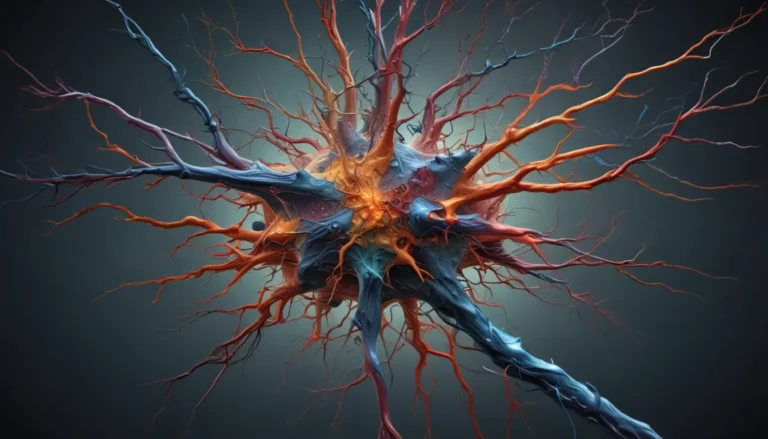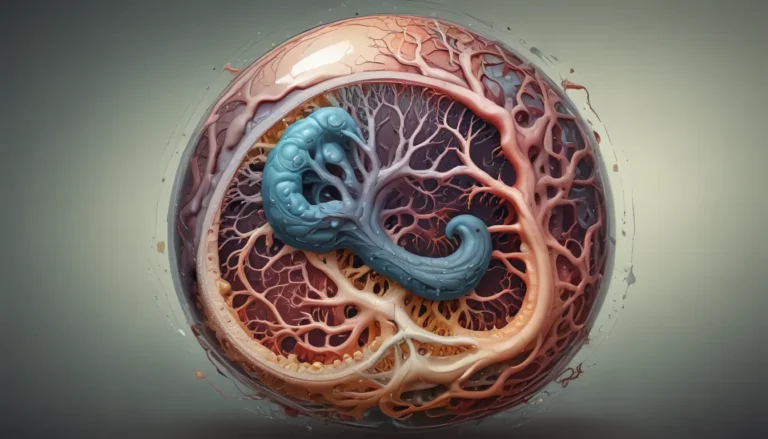A Note About Images: The images used in our articles are for illustration purposes only and may not exactly match the content. They are meant to engage readers, but the text should be relied upon for accurate information.
Genetic linkage analysis plays a crucial role in unraveling the mysteries of hereditary diseases and the inheritance patterns of traits among individuals within families. This powerful tool in genetics allows scientists to explore the association between genetic markers and specific traits or diseases, providing valuable insights into the genetic factors underlying their development.
In this comprehensive guide, we will delve into 16 fascinating facts about genetic linkage analysis, from its inception to practical applications, showcasing its significance in the field of biology. Join us on a journey to discover the wonders of our genetic code and the profound impact of genetic linkage analysis on our understanding of genetics.
Unveiling the Intricacies of Genetic Linkage Analysis
- Genetic linkage analysis helps scientists understand how traits and diseases are passed down in families by studying the inheritance of genetic markers. This can lead to the discovery of disease-causing genes and potential treatments.
- By using genetic linkage analysis, researchers can map out the location of genes related to both rare and common disorders, providing valuable information for genetic counseling and the development of new therapies.
The Evolution of Genetic Linkage Analysis
- Genetic linkage analysis provides crucial insights into the inheritance patterns of genetic traits by studying the co-segregation of genetic markers with specific traits or diseases within families, identifying regions of the genome likely to harbor disease-causing genes.
- Dr. Alfred H. Sturtevant introduced genetic linkage analysis in 1913, laying the foundation for studying the physical proximity of genes on chromosomes.
Understanding Genetic Linkage Analysis Techniques
- Genetic linkage analysis involves analyzing the transmission of genetic markers, such as single nucleotide polymorphisms (SNPs), across generations to track the inheritance of genetic traits through families.
- The LOD score, a statistical measure used in genetic linkage analysis, assesses the likelihood of genetic linkage between a marker and a trait, with higher scores indicating stronger evidence for linkage.
Applications and Implications of Genetic Linkage Analysis
- Genetic linkage analysis can be used to identify disease-causing genes by comparing genetic markers of affected individuals with unaffected individuals to pinpoint the genomic regions associated with the disease.
- It also aids in identifying disease susceptibility genes and mapping genetic disorders in pedigrees, constructing pedigrees to map the location of disease-causing genes.
Advancements in Genetic Linkage Analysis
- Genetic linkage analysis has been essential in identifying genes associated with Mendelian disorders like cystic fibrosis and Huntington’s disease, mapping them to specific chromosomal locations.
- It can determine the genetic basis of complex traits by studying large families with conditions like diabetes or cancer to identify genetic variants contributing to their development.
Exploring Genetic Recombination and Disease Modifying Genes
- Linkage analysis can reveal genetic recombination events during meiosis, shuffling genetic information between chromosomes.
- It aids in the identification of disease-modifying genes that interact to modify the severity or progression of diseases.
The Foundation of Genetic Linkage Analysis
- Genetic linkage analysis is based on Mendelian inheritance, assuming predictable inheritance of genetic traits according to Mendel’s laws of segregation and independent assortment.
- It has been instrumental in understanding the genetics of rare disorders by analyzing families with rare genetic conditions, providing insights into potential therapeutic targets.
Techniques for Genetic Linkage Analysis
- Various techniques, including microsatellite markers, SNPs, and whole-genome sequencing, can be used for genetic linkage analysis to identify disease-causing genes and genetic variants.
- It aids in genetic counseling by identifying the inheritance patterns of genetic traits within families to provide information on passing on certain conditions or disorders.
The Impact of Genetic Linkage Analysis on Genetics
- Genetic linkage analysis plays a crucial role in gene mapping and positional cloning, providing a roadmap for narrowing down candidate genes and discovering new genes underlying diseases and traits.
- It has led to significant advancements in fields like medicine, agriculture, and evolution by identifying disease-causing genes, developing targeted therapies, and breeding desirable traits in crops and livestock.
Concluding Thoughts on Genetic Linkage Analysis
Genetic linkage analysis is a powerful tool that unveils the inheritance patterns of genes and their association with specific traits or diseases. By mapping genes to specific regions of the genome, we gain valuable insights into the genetic basis of various conditions, advancing our knowledge in medicine, agriculture, and evolution.
FAQs
Q: What is genetic linkage analysis?
A: Genetic linkage analysis is a method used to determine the relative positions of genes on a chromosome and how they are inherited together.
Q: What are genetic markers?
A: Genetic markers are specific regions in the genome that can be tracked and used to identify the presence or absence of a particular gene or trait.
Q: How is genetic linkage analysis useful in studying genetic diseases?
A: Genetic linkage analysis helps researchers identify the location of disease-causing genes, leading to a better understanding of the underlying genetic mechanisms and the development of targeted therapies.
Q: Can genetic linkage analysis be used in plant and animal breeding?
A: Yes, genetic linkage analysis is widely used in breeding programs to identify and track desirable traits in crops and livestock, allowing for more efficient and targeted breeding strategies.
Q: What are some limitations of genetic linkage analysis?
A: Genetic linkage analysis can be limited by factors such as incomplete penetrance, genetic recombination events, and the presence of complex genetic interactions.
Genetic linkage analysis is a captivating field of genetics that offers a glimpse into the intricate world of hereditary diseases and genetic traits. By unraveling the complexities of gene co-inheritance, researchers continue to push the boundaries of our understanding of genetics, paving the way for groundbreaking discoveries and advancements in various disciplines. Dive into the realm of genetic linkage analysis and witness the marvels of our genetic code come to life.




